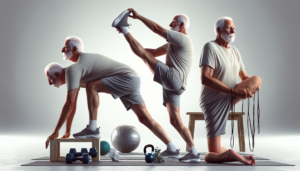Stress Relief Pressure Points: A Guide to Alleviating Stress and Anxiety
Stress is a normal part of life, but when it becomes too much to handle, it can have serious consequences for your health and well-being. While there are many ways to manage stress, one effective technique is through the use of pressure points. Pressure points are areas of the body that, when stimulated, can help alleviate stress and anxiety. In this article, we’ll explore some of the most effective stress relief pressure points and how to use them.
Are you feeling overwhelmed by stress and anxiety? Do you want to find a natural way to alleviate your symptoms? Pressure points may be the solution you’re looking for. Read on to discover how to use pressure points for stress relief.
Stress is a common problem that affects people of all ages, genders, and backgrounds. It can come from various sources, including work, relationships, financial problems, and health issues. When left unchecked, stress can lead to physical and emotional problems, such as headaches, insomnia, depression, and anxiety. That’s why it’s essential to manage stress effectively.
One way to manage stress is through the use of pressure points. Pressure points are areas of the body that, when stimulated, can help relieve tension, reduce pain, and promote relaxation. Applying pressure to these points can help release the body’s natural healing energy, promoting balance and harmony.
In this article, we’ll explore some of the most effective pressure points for stress relief and how to use them.
What are Pressure Points?
Pressure points are areas of the body that are sensitive to touch and can be stimulated to alleviate pain and promote healing. They are located along the body’s energy channels or meridians, which are pathways that connect various organs and body systems.
In traditional Chinese medicine, pressure points are used to balance the flow of qi, or life force energy, in the body. According to this system, when qi is flowing smoothly, the body is in a state of health and balance. When it’s blocked or stagnant, the body experiences pain, illness, and emotional distress.
How Do Pressure Points Work for Stress Relief?
When you apply pressure to a specific point on your body, you activate your body’s natural healing response. This response triggers the release of endorphins, which are natural painkillers that can help reduce stress and anxiety.
Pressure points also help improve blood flow and promote the relaxation response, which can reduce tension and promote a sense of calmness. By stimulating these points regularly, you can help reduce stress and promote overall well-being.
Top Pressure Points for Stress Relief
-
The Third Eye Point (GV 24.5)
The Third Eye Point is located between the eyebrows, where the bridge of the nose meets the forehead. Applying pressure to this point can help reduce stress and anxiety, improve concentration, and promote relaxation.
To stimulate this point, use your index and middle fingers to press firmly on the point for 1-2 minutes. Close your eyes and take deep breaths as you apply pressure.
-
The Heavenly Pillar (BL 10)
The Heavenly Pillar is located at the base of the skull, on the muscle that connects the neck and the skull. Stimulating this point can help relieve tension headaches, neck pain, and shoulder pain, as well as promote relaxation.
To stimulate this point, use your thumbs to apply firm pressure to the point for 1-2 minutes. Take deep breaths and focus on releasing any tension in your neck and shoulders
-
The Pericardium Point (PC 6)
The Pericardium Point is located on the inside of the wrist, about two finger-widths from the crease. This point is commonly used to alleviate nausea, motion sickness, and anxiety.
To stimulate this point, place three fingers on your wrist, with the bottom finger on the wrist crease. Apply firm pressure with your thumb and hold for 1-2 minutes, breathing deeply.
-
The Union Valley (LI 4)
The Union Valley is located on the webbing between your thumb and index finger. Stimulating this point can help reduce stress, tension headaches, and neck pain.
To stimulate this point, use your thumb and index finger to apply firm pressure to the webbing for 1-2 minutes, taking deep breaths as you do so.
-
The Calming Point (CV 17)
The Calming Point is located in the center of your chest, about three finger-widths above the breastbone. Stimulating this point can help reduce anxiety, stress, and depression, as well as promote relaxation.
To stimulate this point, use your fingertips to apply firm pressure to the point for 1-2 minutes, taking deep breaths as you do so.
Tips for Using Pressure Points
When using pressure points for stress relief, there are a few tips to keep in mind:
- Start by finding a quiet and comfortable place to sit or lie down.
- Take deep breaths as you apply pressure to each point.
- Use gentle, but firm pressure. You should feel a slight discomfort, but not pain.
- Hold each point for 1-2 minutes, or until you feel a sense of release and relaxation.
- Repeat the process as often as needed, depending on your level of stress and anxiety.
Conclusion
Stress and anxiety can have a significant impact on your health and well-being, but there are many ways to manage these symptoms, including the use of pressure points. By stimulating specific points on your body, you can help reduce tension, promote relaxation, and alleviate stress and anxiety.
The pressure points we’ve discussed in this article are just a few of the many points you can use for stress relief. Experiment with different points and find the ones that work best for you. With regular practice, you can use pressure points to help manage stress and improve your overall well-being.



